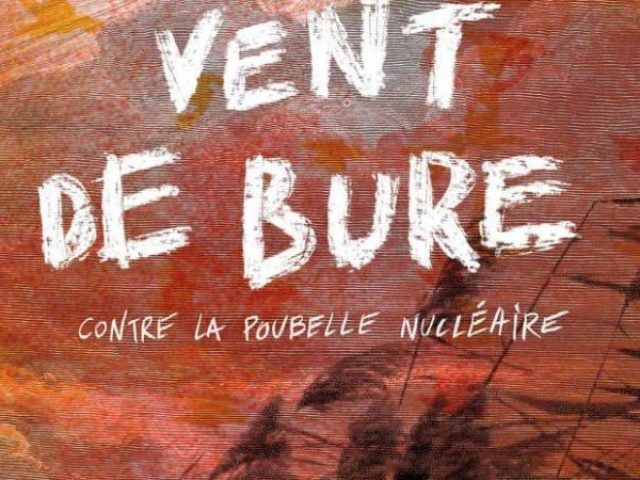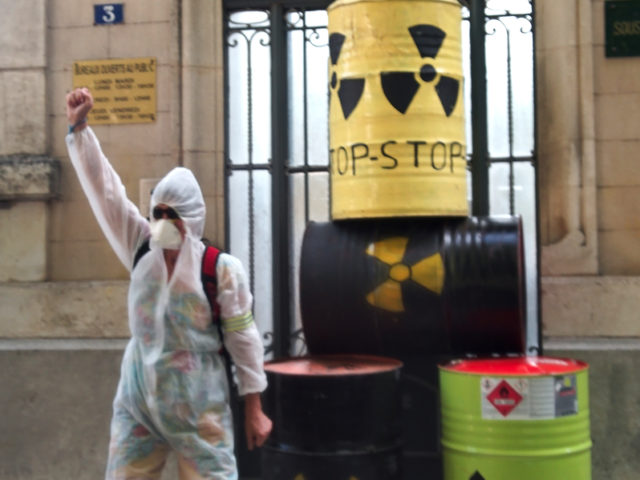Bure: The return of owls
About the reoccupation of Lejuc wood in July 2019
Two months have passed since the news of the reoccupation of the forest was reported by the media. The violent evacuation immediately followed and lasted two days. Would this action have failed? We don’t think so! The media attention was as great as its disappearance was rapid, especially since no other sign of life in the form of declarations or actions followed on the part of those who caused this reoccupation. We deeply regret that, after the event, there was no publication by the persons concerned. We believe that this would have been important to open the discussion on what happened and to draw conclusions on the prospects for the fight. It seems useless to us to speculate on the reasons for this silence, he has his reasons. However, as people living and fighting here, on “Zone “1, we want to take this opportunity to share some personal thoughts on the subject with those involved in this action and those involved in this struggle. An analysis of what was done or not done in the field at that time is not possible.
What we want to say first of all is that this brief (re)outbreak of resistance has given us hope! For more than two years, we have been living here under police occupation. Permanent provocation and state harassment are our daily routine in this region, which is administered in a mafia-like manner. Girlfriends are in prison, on the run or have left. By living in these conditions we quickly understand that this struggle cannot be won “militarily”. And yet it may be right and necessary to choose the attack! The resignation that had spread to Bure and surrounding villages since the evacuation in February 2018 was broken for a short time. And even if it was not possible to win a victory over the nuclear vassals, we have overcome the fear that has marked our daily lives for too long.
The owls are back! At least here, on “Zone”, the message got through despite the limited information that was disseminated. We see it in the complicit smile of our neighbours when we flee gendarmerie patrols in the villages. But also in their jubilant glances when they pass in front of their houses. We read it in the sinister faces of the project’s supporters who seemed to have become accustomed to deadly pacification. We also read it about the cops’ whining requisitions during vehicle searches2, which testify to the fact that two months later, they did not digest the throws of Molotov cocktails and stones. We do not know if the people directly concerned share our optimism. At least, it seems difficult to imagine that people would find the energy to engage in this type of confrontation without hope of achieving tangible success in the end. It seems all the more important to us to affirm to the people who resumed the fight for Lejuc Wood in July that they did not fail and that the fires they started continue to burn in our hearts!
From a technical point of view, the assurance with which this reoccupation was carried out is very clear: from what we have heard, we assume that the cops were caught by surprise. There were no reinforced patrols in and around the forest, no climbing team (they had to come from Paris). 300 gendarmes are permanently available to guard this 200-hectare forest. Instead, they prefer to spend their time harassing residents and carrying out abusive controls. The commanders probably had to explain how about 50 activists managed to enter the forest without being noticed, build huts in the trees, erect barricades, then attack and chase away the cops who were guarding the wood. They therefore preferred to use an attack from the outside as an excuse, which they believe has been contained. The simple fact that at the time the occupation was revealed, 4 tree houses had already been built proves that this statement is false and cheap propaganda. Although they did not seem to expect at the time and intensity of the attack, this does not mean that they were not prepared! We have the impression that at the time of the publication of the occupation communiqué, they already had a planned and well-established intervention scenario that was available at all times thanks to the permanent presence of the gendarmerie. It seems interesting to discuss what this means in terms of future strategies for action in the “zone”.
But it was not only the police who seemed surprised by the unexpected reoccupation: the lack of mobilization in the preparatory period, the poor communication during the action and afterwards made it difficult for many people in the fight against Cigeo to understand politically the events. Later, we often heard the criticism that the missing information gave the image of an event carried by a closed group in which many people could not find themselves. This may be one of the reasons (in addition to the short duration) why support for external occupation – which would probably have been necessary for a longer occupation – has been limited. We have the impression that many more people could have participated or shown their solidarity if the action had been communicated more openly. The movement’s participation was therefore limited to a few photos and texts of solidarity and to an ENEDIS car set on fire in Ivry-sur-Seine.
As far as we know, there were no injuries and the consequences in terms of repression could have been worse: during the evacuation, there were several cases of identity checks and police custody. It is not at all clear to the cops whether these people were involved in the occupation or whether they were just in the area. All those arrested were released shortly thereafter. On the same day, another arrest took place in Bure, but not directly related to the occupation: a person was arrested for non-compliance with his judicial control (inadmissibility) and sentenced to at least 4 months’ preventive detention’3. The person has since been in Nancy/Maxeville prison. There has been (so far) no major state reaction to this reoccupation.
After all that we learned later on about the character of the action taken, it is not possible to talk about a homogeneous commando action. Although the well-kept secret of planning has effectively excluded many people, the reoccupation shows a real diversity of tactics, in which different forms of action have coexisted equally. We still consider this heterogeneity as a central key to the success of our resistance! Therefore, we do not want to consider the reoccupation of the forest as an isolated act. Behind this, there is a turbulent summer during which resistance against the nuclear waste project has been strong in many respects. The events carried out by various components have shown that the fight against cigeo continues at all levels. With, among others, the 33 conferences that responded to the public debate on nuclear waste management, the inter-committee meetings that took place at the beginning of August in Dijon and will again take place in November towards Valence, the Bure’lesques Festival that brought together more than 1000 people in Hévillers, the inauguration of the permanent exhibition “Trainstopping” at the Luméville station, the feminist – antinuclear rally that will take place in Montiers this weekend, the construction week that will take place at the Resistance headquarters in Bure at the end of October.
The daily terror of the authoritarian state is beginning to fade. There’s almost nothing they can do to us that they haven’t already done to us. And yet our struggle continues! Less spectacular than before, but with more care and awareness of the consequences. Repression has created fear, division and mistrust. It will probably take some time to restore the lost trust in ourselves and in each other. But we are convinced that if we continue on this path, we will be able to base future confrontations on more solid foundations that will resist repression. We will continue with the means at our disposal to prevent this costly, unnecessary and dangerous project that is cigéo. We hope for a large participation in the “Bure wind” event on 28 September in Nancy. Let’s put our anger on the street together!
Some people on “zone”, 14 September 2019
1 By “zone”, we mean the villages surrounding the cigéo project
2 General dispositions permitting the control of vehicles and occupants.
3 Preventive detention can be extended up to 16 months
14/09/2019
Et sinon, 26 jours avant
on écrivait ça.

Bure’s wind is coming : from 28 to 29 of septem...
At the end of April we decided to postpone Vent de Bure, taking into account comments of local groups. THANK YOU for telling us what you needed and expect for this event. Postponing is not a decisi... Lire la suite
19/08/2019
Et sinon, le lendemain
on écrivait ça.

FROM CADARACHE TO BURE, STOP THE NUCLEAR MADNES...
CADAR ACHE: A HUGE ATOMIC FUNFAIR 30 KM FROM FORCALQUIER On the banks of the Durance is the largest nuclear research centre in Europe. Covering over 1620 hectares there no less than 19 civil and mi... Lire la suite
15/09/2019
